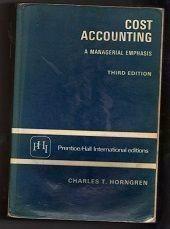Requieu UMTALUN Exercise 6-21B Complete the accounting cycle using inventory transactions (L06-2, 6-3, 6-5, 6-6, 6-7) (The following information applies to the questions displayed below.) On January 1, Year 1, the general ledger of a company includes the following account balances: Accounts Cash Accounts Receivable Allowance for Uncollectible Accounts Inventory Land Accounts Payable Notes Payable (128, due in 3 years) Common Stock Retained Earnings Totals Debit Credit $ 24,100 42,000 $ 2,500 41,000 78,100 29,700 41,000 67,000 45,000 $185,200 $185,200 The $41,000 beginning balance of inventory consists of 410 units, each costing $100. During January Year 1, the company had the following inventory transactions: January 3 Purchase 2,000 units for $218,000 on account ($109 each). January 8 Purchase 2,100 units for $239, 400 on account ($114 each). January 12 Purchase 2,200 units for $261,800 on account ($119 each). January 15 Return 155 of the units purchased on January 12 because of defects. January 19 Sell 6,400 units on account for $960,000. The cost of the units sold is determined using a PIPO perpetual inventory system. January 22 Receive $950,000 from customers on accounts receivable. January 24 Pay $680,000 to inventory suppliers on accounts payable. January 27 Write of accounts receivable as uncollectible, $2,000. January 31 Pay cash for salaries during January, $125,000. The following information is available on January 31, Year 1. a. At the end of January, the company estimates that the remaining units of inventory are expected to sell in February for only $100 each. January 27 Write oft accounts receivable as uncollectible, $2,000. January 31 Pay cash for salaries during January, $125,000. The following information is available on January 31, Year 1. a. At the end of January, the company estimates that the remaining units of inventory are expected to sell in February for only $100 each. b. The company estimates future uncollectible accounts. The company determines $5,100 of accounts receivable on January 31 are past due, and 40% of these accounts are estimated to be uncollectible. The remaining accounts receivable on January 31 are not past due, and 5% of these accounts are estimated to be uncollectible. (Hint: Use the January 31 accounts receivable balance calculated in the general ledger.) C. Accrued interest expense on notes payable for January. Interest is expected to be paid each December 31. d. Accrued income taxes at the end of January are $13.400. Exercise 6-21B Part 5 5. Prepare a classified balance sheet as of January 31, Year 1. (Amounts to be deducted should be indicated with a minus sign.) Classified Balance Sheet January 31, Year 1 Assets Liabilities Total current assets Total current liabilities Total liabilities








